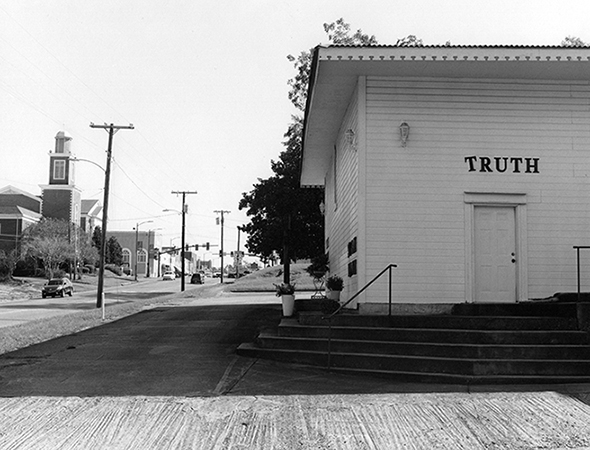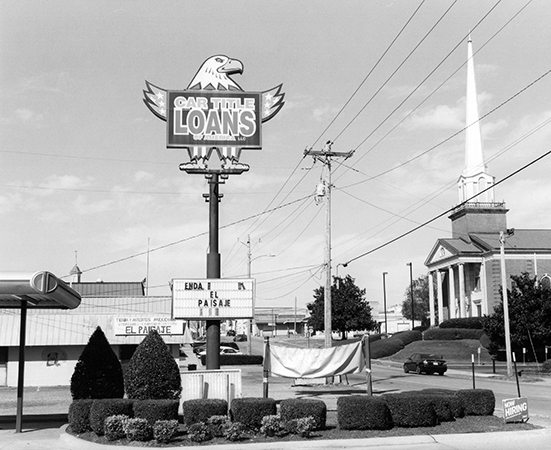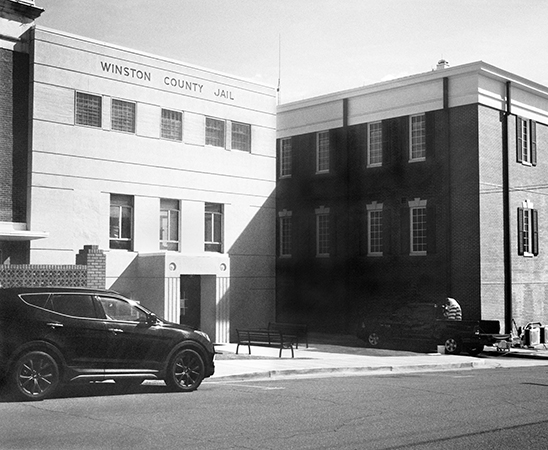CRITICAL PLACES: WINSTON COUNTY, MISSISSIPPI
(2021)
The Winston County Conspiracy of 1859
What caught my attention about this revolt was that an ambrotypist was involved. The ambrotype was a photographic process, similar to the daguerreotype, that was widely used by itinerant portrait photographers in the 1850s. Being a photographer myself, I immediately wanted to know more.
The Twenty-Eighth Annual Report of the American Anti-Slavery Society cites a letter published in the Mississippi Central Inquirer, telling of how a Mr. C.D. Kelly, "chastising his slave woman," got her to reveal a plot for insurrection. She named a White man, G. Harrington, identified as a traveling ambrotypist, as the instigator. Harrington was hanged, as was at least one unnamed slave. Reading this I wondered: was there really a plot or was this one of the many supposed conspiracies born more from fear of revolt than anything else? And if the plot was real, was Harrington really implicated? Was he an abolitionist actively working to free the enslaved, or was he perhaps simply someone who had spoken too freely in expressing his views about slavery?
I tried to learn more but haven't found any trace of a Mississippi Central Inquirer, nor have I found anything about a photographer named G. Harrington.
I contacted the Mississippi Department of Archives to see if they might be able to help. They told me that since it was a vigilante committee "investigating" this conspiracy, there would be no archived court proceedings. They did however find a C.D. Kelly named in the 1860 Census. Yet, interestingly, this supposed owner of the enslaved woman was not listed as a slave owner in the census's Slave Schedule.
In Negro Slave Insurrections in Mississippi, 1800-1865 Davidson Burns makes the point that local papers often printed sensational rumors of insurrection, leaving it to the public's imagination as to whether the revolt succeeded, failed, or even took place. The Abolitionist press was only too happy to carry those stories as they reinforced their augmentation against slavery.
I started to wonder not only if there was really a conspiracy, but also if the hangings really happened. Or was it all just disinformation? As I write this it occurs to me: isn't this exactly what disinformation is all about: to confuse, distract from the larger issues?
All this echoed strangely in the misinformation that I seemed to see all around me when I visited Louisville, the county seat. There was its typical soldier-farmer monument that pretended not to be a confederate monument, and a movie theater adorned with a prominent swastika, albite reversed, and then I found myself staying in a resort with a Native-American sounding name, though I quickly found out the place had no relation to the local indigenous communities. A description on the back of the menu tells of how it used to be a plantation. It relates that when it was overrun by the Union Army during the Civil War, the owner, together "with a group of black men," hid livestock in the forest. No mention of slaves.
Leaving Louisville I drove by a large factory just outside town. The motto Faith Vision Work is inscribed in an arch over the gate. I couldn't help but be reminded of the motto inscribed over the gate at Auschwitz—Work Sets You Free.

Truth Church. Louisville, Mississippi. 2021

Louisville, Mississippi. 2021.

Louisville, Mississippi. 2021.